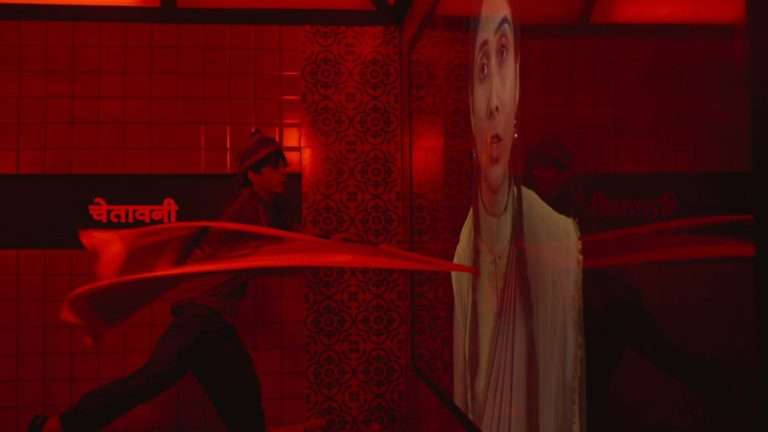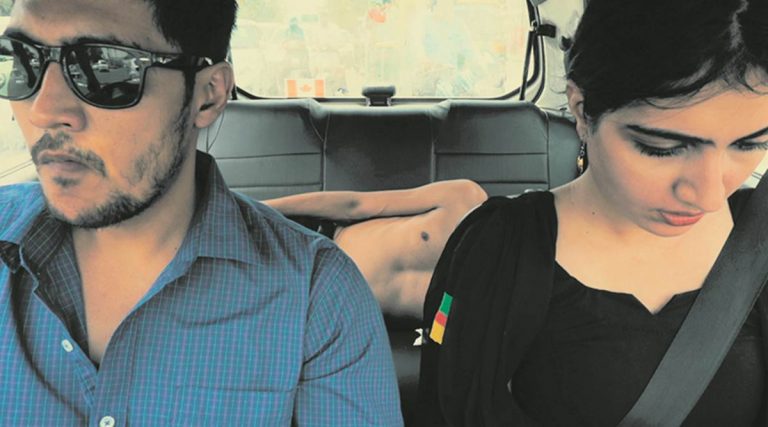For the last two years, we have witnessed severe destruction in Gaza with no regard for even the most basic human rights of its residents. It was not only about the land and its architecture, but the hopes and dreams it crushed along the way. Though presented as a tragedy that erupted in 2023, its roots stretch back decades, shaped by a long history of oppression—where one side, backed by immense military power, imposed harsh restrictions on the other, which had little means of resistance.. Emily Mkrtichian’s documentary, “There Was, There Was Not” (2025), offers a window into a similar narrative of the erasure of the native population, where survival in itself becomes a form of resistance.
Mkrtichian shares a story of the Republic of Artsakh, a land that has ceased to exist under this name. The story is about the lack of recognition. But it is also one of the forced displacements of the indigenous population, who had been hoping to build peaceful and equitable lives for themselves for nearly three decades, since the 1990s, when they lived through a war for independence. Mkrtichian initially framed her documentary as a means to portray their resilience through the eyes of four women, who were dealing with socio-political issues in their collective lives. Her film would have only been a personal account of their joys and struggles, living in the shadow of a devastating tragedy.
Instead, the film became one of resilience through the record of another tragedy unfolding in real time. Its suddenness and the resulting disruption of lives become even more pronounced since Mkrtichian portrays these four women as real people beyond what they represent in this specific context. So, we do not see them only as everyday heroes, hoping to make this world a better place in their own way. We also see mundane details of their existence in simple acts of joy and leisure. In such moments, we see a girl speaking adoringly about something as simple as picking up mulberries, and a woman getting her hair done not for anyone else’s pleasure but her own. These minor, seemingly inconsequential details add significantly to their personhood, rather than reducing them to mere representations.
It matters more because the reports of such incidents represent people as numbers or professions on a data sheet. In that regard, Mkrtichian’s film is not only humanist, it is deeply personal. It gives a fuller sense of these four women’s personalities, where we remain invested in their lives, not only for their display of strength or courage. After all, these are real people, with emotions and desires just like anyone else around the world. Mkrtichian effectively captures their’ interiority through simple moments and gestures. She shows Sose Balasanyan, a Judoist, who guides her students to grow high resistance to pain with a stoic solemnity, but is overjoyed the moment she lays her eyes on a stuffed toy, which brings out the child in her.

The film doesn’t discount one for the other. Instead, it unwittingly breaks the stereotypes that women have to stick to being one or the other. While that has always been true, it hasn’t always been documented with such clarity and compassion. As a result, Mkrtichian’s film is tender and reflective in its representation, but that approach does not keep it away from documenting the harsh reality. She presents Artsakh in the late 2010s, up to 2023, through the eyes of four women who fight one or another battle every day. It doesn’t show them through the usual gaze to evoke pity or sympathy.
Instead, it portrays them devoid of these narrative clichés, showing the women resisting being confined by norms. So, their grief appears layered, tinged with melancholy about past traumas, but filled with routine acts of fighting against social evils, while striving for a better future for more than themselves. In their case, it was impossible to escape the past.
Sveta Harutunyan, one of the four women in Mkrtichian’s film, raised her two young daughters while spending the rest of her days disarming remaining landmines. So, the past crept up on them through such tragic reminders. Still, they hold on to their hopes and dreams. Sosa hoped to win an Olympic medal for the republic, while Siranush Sargsyan hoped to win a local election. Gayane Hambardzumyan remained committed to educating women about their rights, as marital or familial foes affect them all in some shape or form. So, their daily acts of defiance reflected a fight against patriarchal rot around the world.
While using the personal to convey the universal, the film resonates since the author herself becomes a participant in this journey, where her gaze confronts what needs to be. As these women grapple with the sudden loss of their homeland from an attack by the Azerbaijani forces, the story evokes pathos through an earned sentimentality. It depicts the four women’s tragic state of transition, as conveyed in the title, through the emotional residue left from the relics of the places where they once lived and breathed. Through their evolving stories, the film also offers a stark reminder that, while some can safely dream about something specific from their future, others are left with the vestiges to shape their reality based on ever-evolving circumstances.



![Shang-Chi and the Legend of the Ten Rings [2021] Review – Filled with Marvel humor and exquisitely choreographed fight scenes](https://79468c92.delivery.rocketcdn.me/wp-content/uploads/2021/11/Shang-Chi-and-the-Legend-of-Ten-Rings-1-768x512.jpg)



